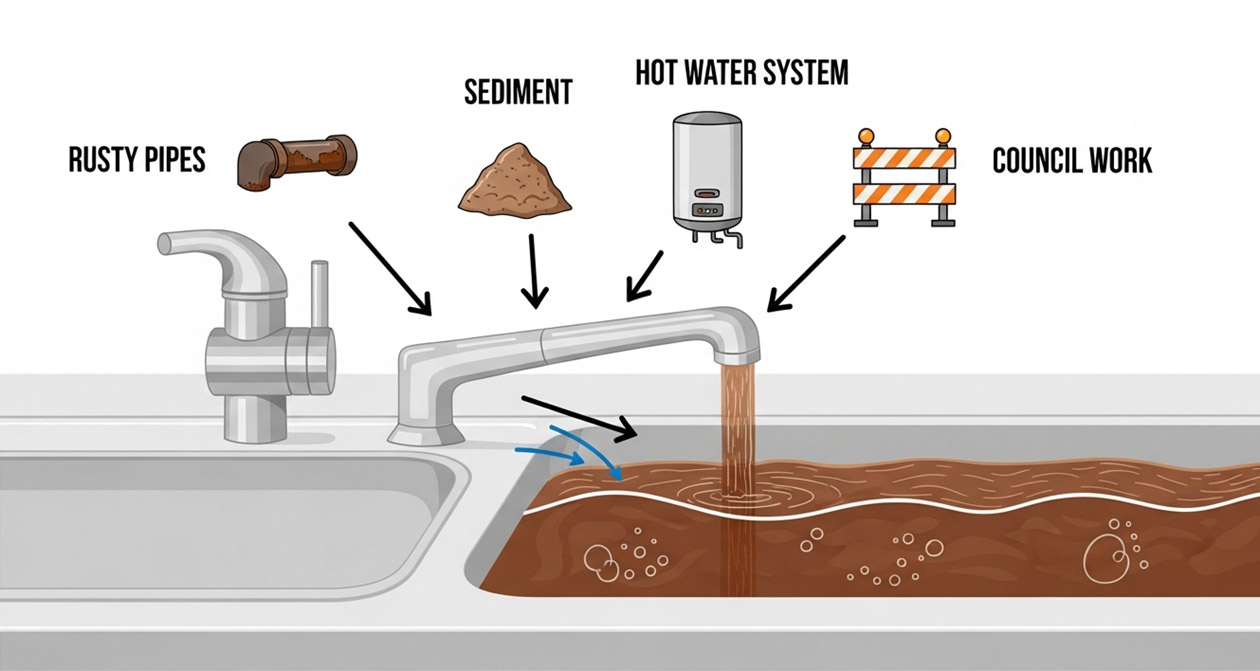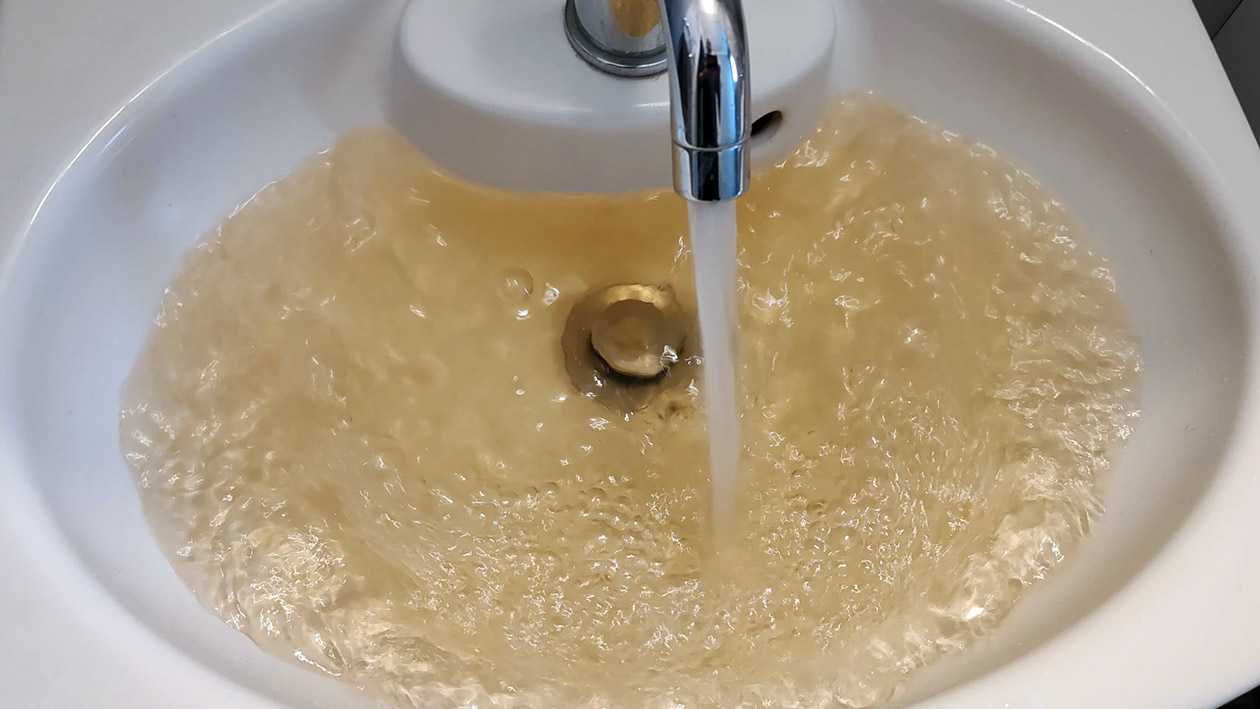So you’ve turned on your tap and out comes what looks like chocolate milk instead of clear water? Not exactly what you were hoping for, hey? Don’t panic just yet – this is actually a pretty common issue that many Aussie households deal with from time to time, especially here on the Central Coast.
First Things First: What’s Causing This Mess?
Brown water from your tap is typically caused by a few culprits, and thankfully, most of them aren’t as scary as they look. The main offenders are:
Rust and sediment stirred up in the pipes. This happens when there’s been maintenance work on the water mains, burst pipes, or even just increased water flow that disturbs the gunk that’s been sitting peacefully at the bottom of your pipes. It’s like stirring up mud in a pond – not pretty, but usually harmless.
Corroded pipes in your home. If you’ve got older galvanised iron pipes (common in homes built before the 1970s), they’re probably starting to rust from the inside out. The rust flakes off and colours your water brown.
Your hot water system playing up. If the brown water is only coming from your hot taps, your water heater might be the culprit. Sediment builds up in the tank over time, and when it gets disturbed, it can make your hot water look like a muddy puddle.
Nearby construction or council work. Sometimes the problem isn’t even in your home – it could be that the council’s been flushing the mains or there’s construction nearby that’s stirred up the sediment in the main supply lines.

Is This Water Safe to Drink?
While brown water looks absolutely revolting, it’s generally not dangerous to drink. The discolouration is usually from iron oxide (rust), which isn’t toxic. However, I wouldn’t recommend guzzling it down like it’s your favourite beverage. The brown colour might indicate that bacteria could be present, especially if there are leaks in your system.
Your best bet is to avoid drinking it until you’ve sorted out the problem. Use bottled water for drinking and cooking if you need to.
How To Figure Out What’s Going On
Before you call in the cavalry, you can do a bit of detective work yourself. Here’s what I’d suggest:
- Check if it’s hot, cold, or both taps affected. Turn on a cold tap and let it run for a few minutes, then do the same with a hot tap. If only the hot water is brown, you’re probably looking at a water heater issue. If both are affected, it’s likely a pipe problem or an issue with the mains supply.
- Have a chat with your neighbours. Pop over and ask if they’re dealing with the same problem. If everyone on your street has brown water, it’s probably a council issue rather than something specific to your home.
- Let the water run for a bit. Sometimes the simplest fix is just letting your taps run for 5-10 minutes to flush out any sediment. Use your garden tap for this – no point wasting good water down the drain when you can water your plants with it.
What To Do About It
If it’s a temporary issue from council work, the water should clear up within a few hours once you’ve run the taps. The local water authority will usually let residents know if they’re doing maintenance work that might affect water quality.
If it’s your hot water system, you might need to drain and flush the tank, or if it’s an old system (over 8-10 years), it might be time for a replacement. This is definitely a job for a professional plumber.
If it’s your pipes, well, that’s where things get a bit more complicated. You might need pipe repairs or even a full replacement if the corrosion is extensive. Again, this is plumber territory.
Long-Term Solutions
- Install a whole house water filter. These can catch sediment and rust before it gets to your taps. They’re particularly useful if you live in an area with older infrastructure.
- Consider re-piping with modern materials. If your home has old galvanised pipes, replacing them with copper or PEX pipes can solve the problem permanently. It’s a significant investment, but it’ll save you headaches down the track.
- Install a water softener. If you’ve got hard water, it can accelerate pipe corrosion. A water softener removes the minerals that cause this problem.
- Regular maintenance. Have your hot water system serviced annually and your pipes inspected periodically. Prevention is always better than cure.
When To Call a Professional
I’m all for a bit of DIY, but there are times when you need to call in the experts. You should definitely ring a plumber if:
- The brown water persists for more than 24 hours after running the taps
- You’re getting brown water from both hot and cold taps consistently
- You notice a drop in water pressure along with the discolouration
- The water has an unusual smell or taste
- You suspect you might have leaks in your system
I’ve been in the plumbing game for over two decades, and I can tell you that brown water complaints spike every summer when the council increases their maintenance work. Most of the time, it’s a temporary inconvenience rather than a major crisis. However, if you’re dealing with it regularly, it’s definitely worth investigating properly.
The key is not to ignore it. While brown water isn’t usually dangerous, it can indicate underlying issues that’ll only get worse if left untreated. Trust me, it’s much cheaper to address a small pipe issue now than to deal with a major leak later.
Remember, your water should be clear and taste fresh. If it’s not, there’s a reason for it, and that reason is usually fixable. Don’t just put up with it – you deserve better than chocolate milk coming out of your taps!



